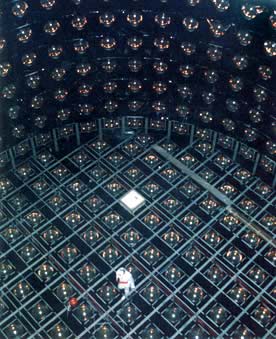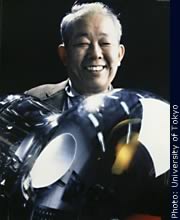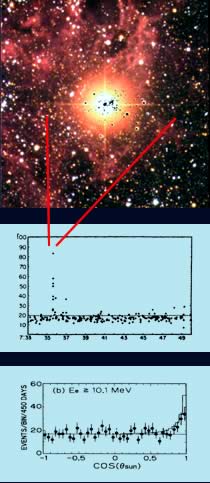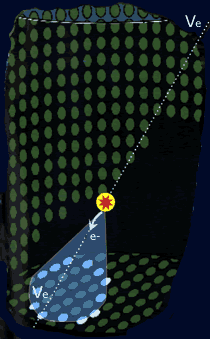The Nobel Prize in Physics 2002
The Kamiokande water tank was lined with photomultipliers. When neutrinos enter the tank, they can interact with electrons. These produce flashes of light, which are registered by the photomultipliers.
Photo: Kamioka Observatory
|
| The Nobel Prize in Physics 2002 | |||||||||||
|
|
KAMIOKANDE CAPTURED NEUTRINOS IN WATER
| |||||||||||
 |
||||||||||||
|
Contents: Addition to the Nobel Poster: Questions and Answers related to the Prize |
|
| Web Adapted Version of the Nobel Poster from the Royal Swedish Academy of Sciences |
Nobel Prizes and laureates
Six prizes were awarded for achievements that have conferred the greatest benefit to humankind. The 12 laureates' work and discoveries range from proteins' structures and machine learning to fighting for a world free of nuclear weapons.
See them all presented here.



